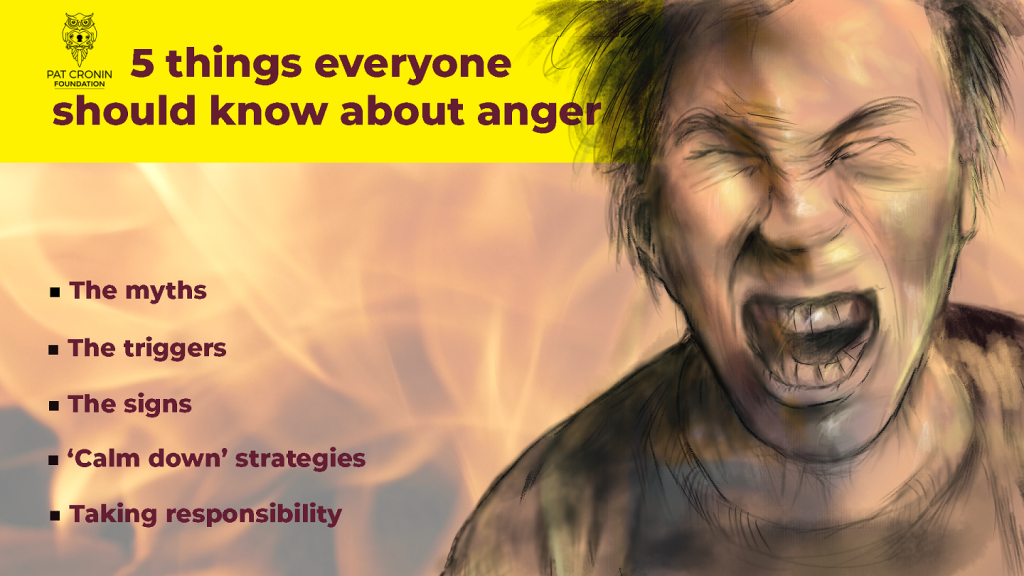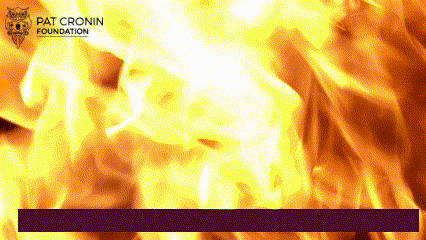
On this page
- What is anger
- Why we need to manage anger
- Dispelling the myth that males and females experience anger differently
- Understanding what anger feels like
- Discover what triggers your anger
- Manage anger with removal, distraction, and getting help
- Learn to take responsibility for your actions
What is anger?
Anger is one of our most primitive emotions, ranging from annoyance to rage – usually in response to unwanted actions of another person, if something goes wrong or if we feel we’ve been “short-changed” in some way.
Anger is completely normal. What matters is how we manage these feelings.
In this article we’ll show you five ways that we – as teachers and parents – can help the next generation understand anger and manage their aggression.

Why we need to manage anger
The ability to manage anger is one of the most important life skills anyone can have.
Social violence destroys far too many lives in Australia each year. A recent snapshot of statistics reveals:
- 23,000 people were hospitalised due to assault in Australia in 2020-2021
- More than 60 per cent of the victims were male
- Predominantly they were in the 15-24 age bracket
- Punching and kicking caused most of the injuries
- The head and neck copped it most*
There’s also another important benefit of learning to manage anger. Because being self-aware is a vital first step in the learning journey, it provides a firm foundation for a whole range of things, such as:
- Reducing stress
- Developing better self-understanding and therefore improving our communication skills
- Creating stronger relationships with other people
- Become more socially accepted
1. Dispelling the myth that males and females experience anger differently
One of the myths that needs shattering is that males and females experience anger very differently.
In reality, there are more similarities than differences. The triggers are generally the same, and the experience is felt with similar intensity and frequency.
The big difference lies in the intensity of aggressive behaviour between genders. Aggression in men has the propensity to result in much greater physical damage.
While there is some conjecture about the way brain biology plays in determining the way different genders act on anger, there is clear evidence that societal expectations play a part.
This is where educational programs that challenge those attitudes, such as those offered by the Pat Cronin Foundation as well as the guidance of parents and teachers, can make significant inroads.
2. Understanding what anger feels like
Getting kids to recognise and name their emotions – including anger – is an important early step.
Anger sparks a whole host of physical responses. Adrenal glands flood the body with stress hormones including testosterone and adrenaline.
Some of the physical effects of feeling angry are:
- Muscle tension
- Increased heart rate
- Sweating
- Feeling hot in the face
- Trembling
Whether we end up punching someone or simply walking away depends on the brain’s prefrontal cortex, which responsible for decision-making.
Science reveals that feeling angry can change the way we view risks, tending to make us more impulsive as well as underestimate the chances of things turning pear-shaped – including the consequences of violence.
3. Discover what triggers your anger
Understanding your own individual triggers is one of the most powerful tools to keeping anger in check.
Anger is a secondary emotion, which means it’s sparked by another feeling. Depending on your experiences and backgrounds, that could range from:
- Hurt
- Fear
- Frustration
- Rejection
- Jealousy
- Embarrassment
- Someone saying something offensive
Get your students – or teenager – to think about their “trigger points” and how they would react in a range of situations.
Then ask them to think about all the possible consequences of those actions, including unintended outcomes.
Finally, help them to discover ways in which they could better handle the situation, without turning to aggression or violence.
4. Manage anger with removal, distraction, and getting help
There are lots of practical, short-term strategies that anyone can use to short-circuit feelings of anger. These include:
- Removal: Walking away, getting some exercise, or taking a “time out” such as moving to another room are simple but highly effective “circuit breakers” when a disagreement begins to escalate. Once removed, you are also able to think more clearly and identify solutions
- Distraction: Removing yourself from a situation is not always possible. An alternative is to distract yourself, such as pausing and thinking before you speak, “venting” to a friend and using relaxation skills to calm yourself
- Getting help: Emphasise to your child that they don’t always have to face problems alone. If feelings of anger persist over longer periods of time and are becoming difficult to control, help from a medical professional should be sought.
5. Learn to take responsibility for your actions
It’s easy to blame others for things that happen in our lives. How many times do we hear of someone blaming aggressive behaviour on a “brain fade” or being provoked – or they “had it coming”.
Taking responsibility starts with being aware of our issues and triggers and how they might affect the people around us.
A good exercise is to take note of how many times in a day or week that you blame other people for something. Observe your behaviour. Then try to think of another way to handle your reactions, in a manner that doesn’t resort to aggression but leads to better outcomes for everyone. How does it feel?
People also ask:
What causes anger?
Triggers vary from person to person, based on their background, experiences and personality. Common ones are:
- Being threatened
- Hurt
- Fear
- Rejection
- Frustration
- Jealousy
- Embarrassment
- Family challenges
How do you stop anger?
Four essential tips for managing anger are:
- Removing yourself from the situation
- Distracting yourself by engaging in an activity (a relaxation technique or exercise)
- Getting help from a trusted friend
- Once calm, express your concerns.
If you experience anger regularly or over long periods of time, it is vital to seek help from a medical professional.
What are the physical effects of anger?
While anger is usually accompanied by obvious facial expressions. With stress hormones flooding the body, other physical sensations can include:
- Muscle tension
- Increased heart rate and blood pressure
- Breathing becomes heavier
- Sweating, especially on the palms
- Feeling hot in the face
- Trembling
Is anger a choice?
We can’t always control the way we feel – including anger. However, we can control the way we act on it – which is an important distinction.
Check out our resources for teachers
Join the 2000 teachers who have already been equipped with the tools for helping students manage anger and conflict.
For primary schools, our new Be Wise Story Book Lesson Plans use engaging storybooks and teacher-led lesson plans to help foster safety and respect in the playground.
For high schools, our Be Wise Violence Prevention eLearning explores risks, choices and consequences – using real stories and personal reflection on how to manage anger and navigate social conflict.
To book a Be Wise presentation, click here or email us at info@patcroninfoundation.org.au.
*https://www.aihw.gov.au/reports/injury/assault-and-homicide

